Breathe
#003
Around the time I started this piece I was exploring transitions for Panoply of geometry after they had been simulated – for instance changing a tubular mesh into an angular one without affecting the dynamic motion. This posed a question about how I could seamlessly move between a flat ribbon surface into a tubular cord like shape in the simplest way possible. The conceptual reasoning behind this piece came about towards the later stages of development as the motion and look felt like an abstract visualization of a lung – it was another case of my mind getting lost in the flow, coming out the other side and making sense of what I had created.
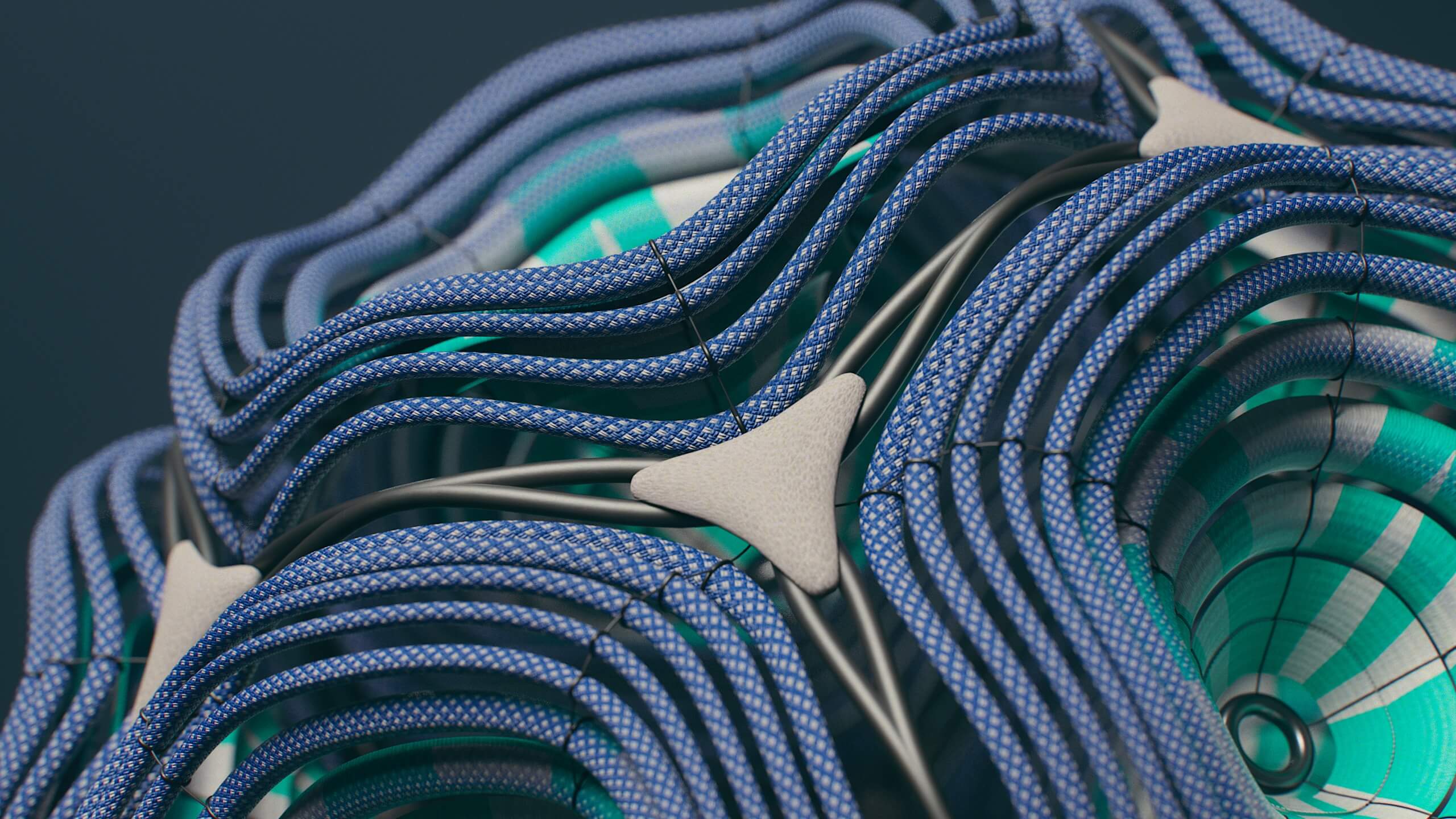
The development for this idea started by breaking down a straight ribbon into its component backbone and profile lines – for each step of the profile along the backbone I created a simple bend deformation that would curl the profile 180 degrees. This bend mirrored across the profile turns a straight line into a circle, which when connected creates the geometry from flat to tubular. With this solved I re-engineered my setup to work with concentric circular ribbons which would allow a transition from a flat donut shape to individual tubular cords.
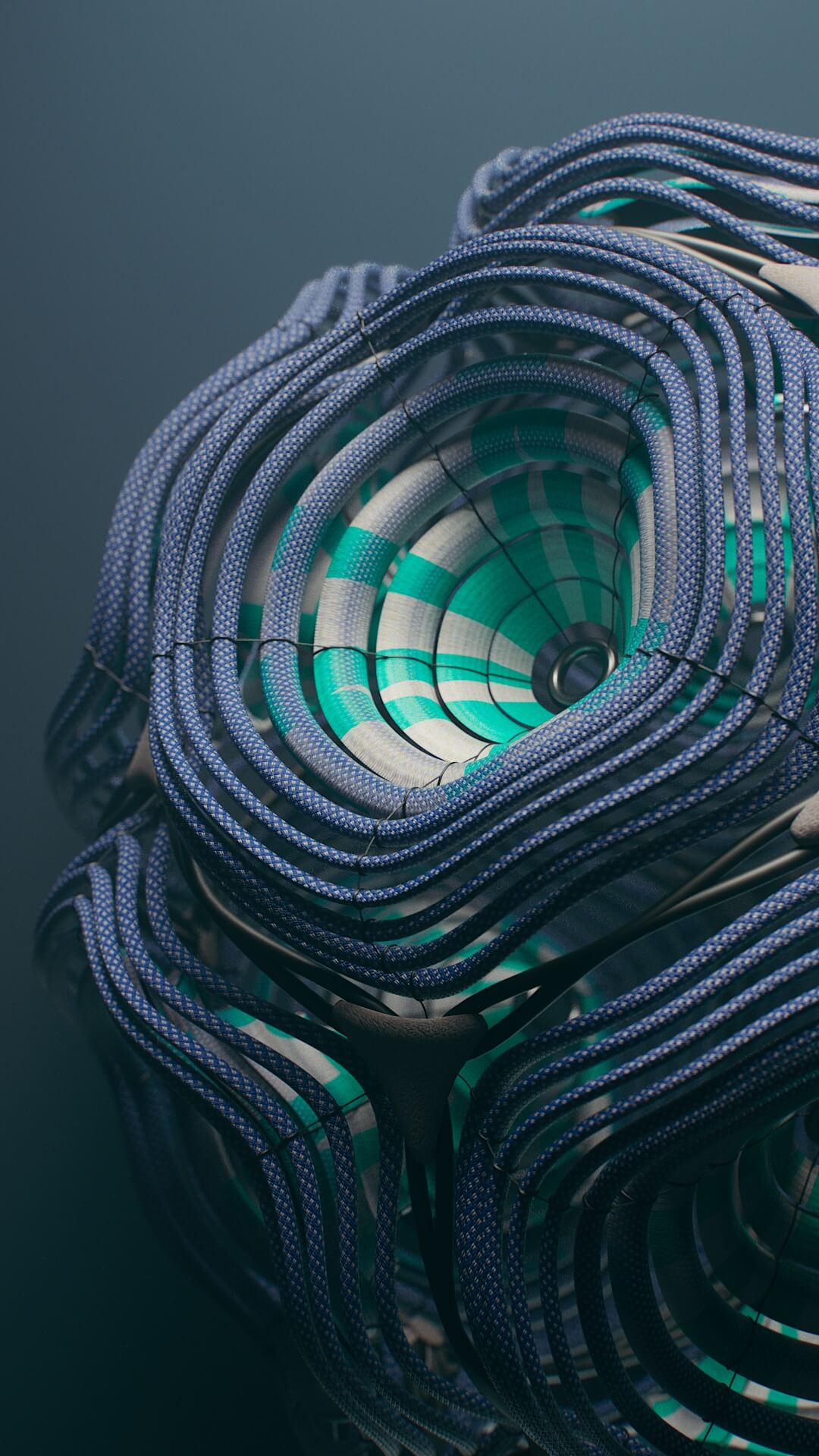
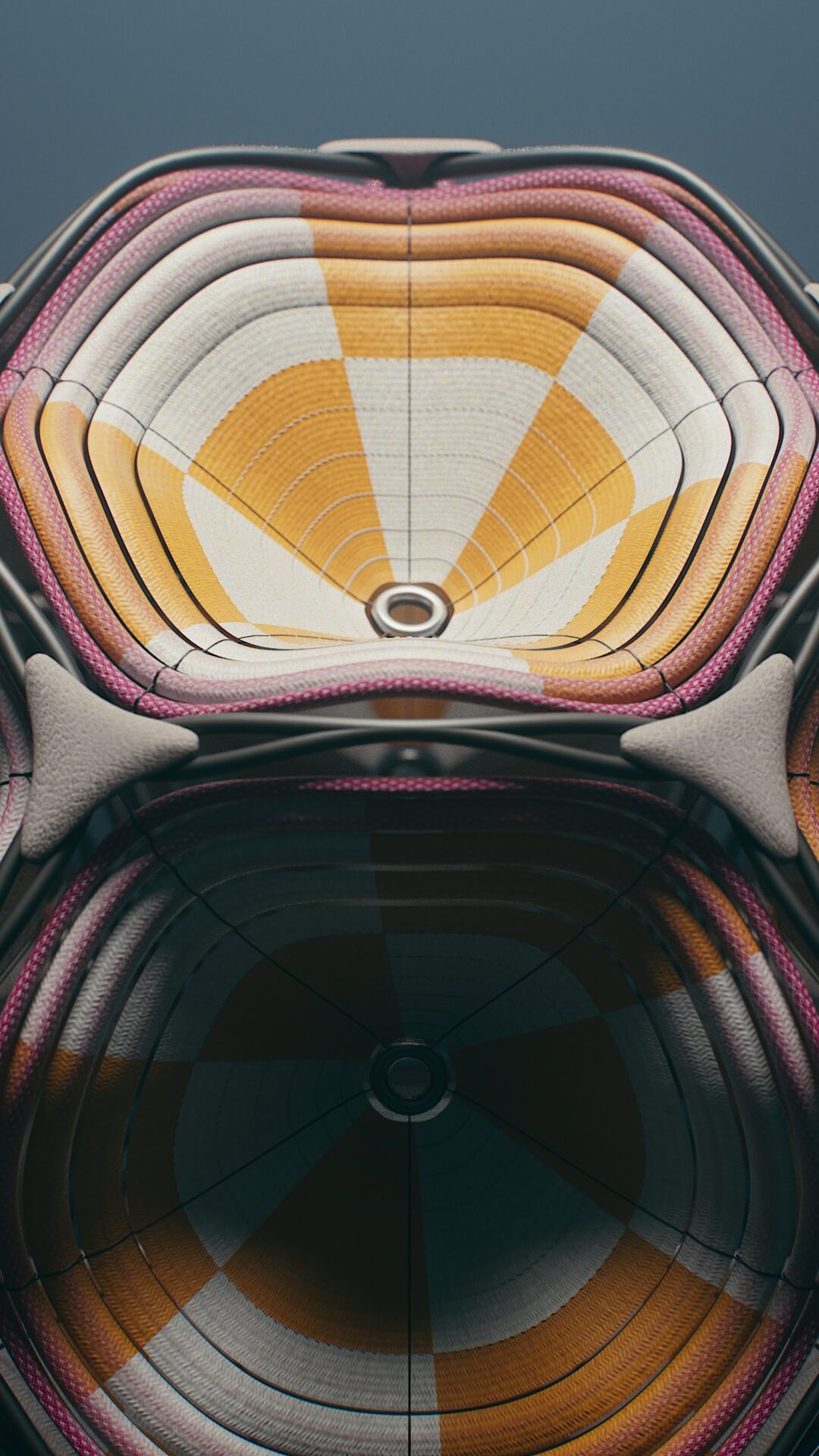
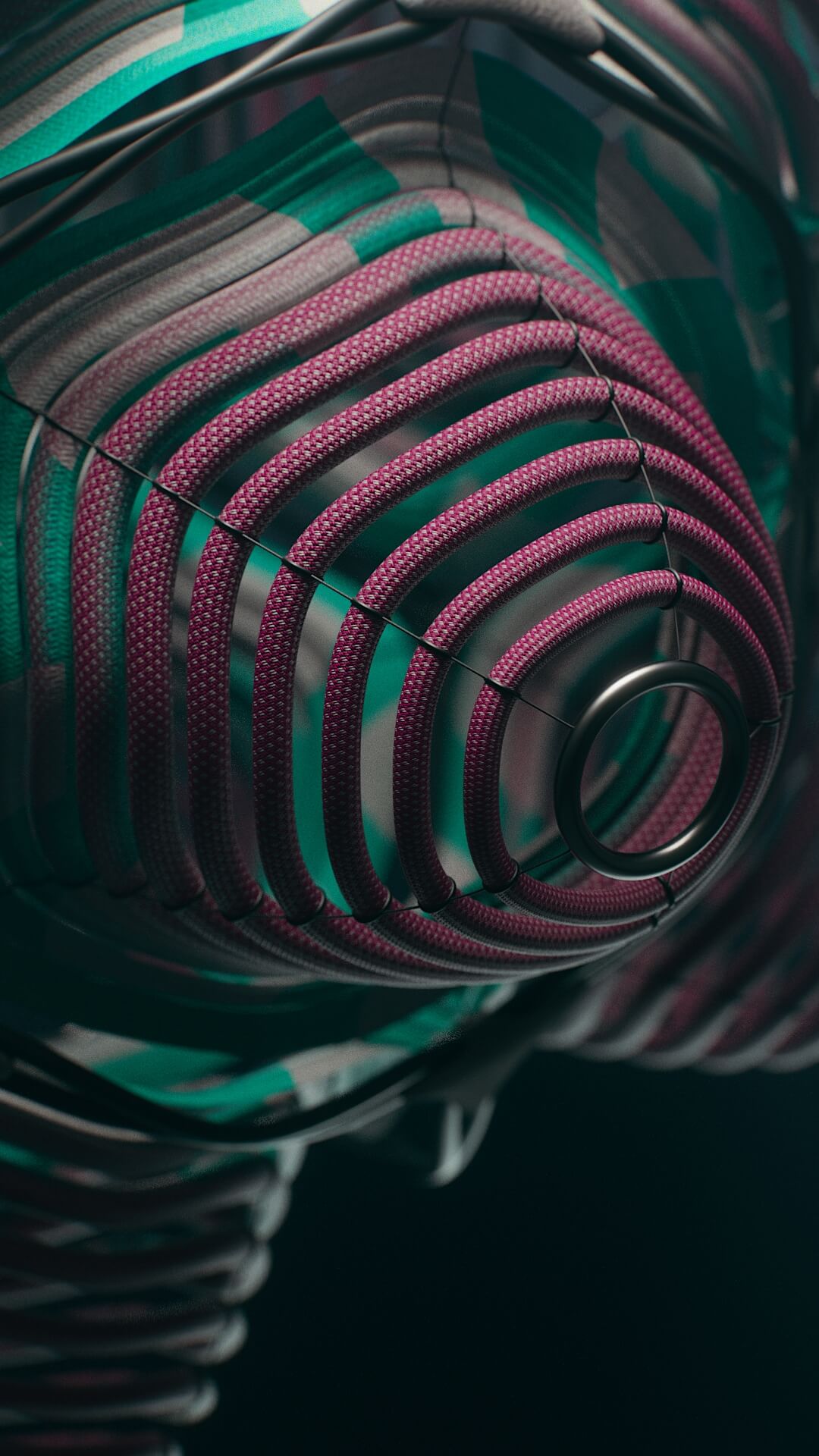
For the base framework I experimented with subdividing different polyhedral forms and then flattening the ‘pointy parts’ (not sure how better to describe it). This created a nice variation in shapes whilst retaining a sense of mathematical uniformity. From the flattened polygon faces of the frame I created concentric rings which I was able to apply the set up that I had already developed – then all I had to do was add the ‘breathing’ deforming motion as well as blending between the ribbon and the tubular states. This piece evolved at each step as I regularly asked myself “What if I tried to….?” – these little ideas and problems allow a layering of simple motions and forms to finalize a Mesmeric with multiple levels of complexity.
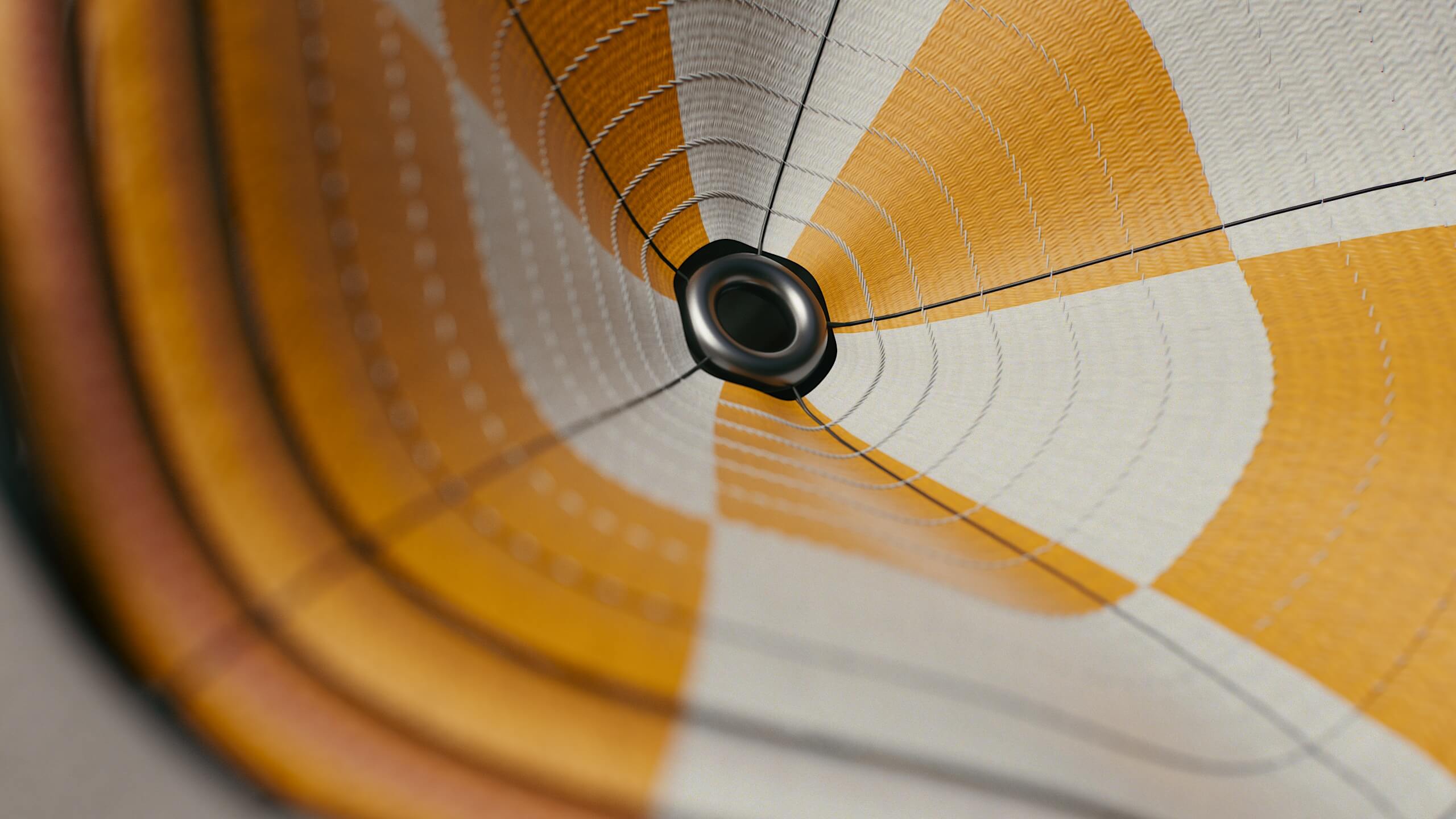
© 2024 Mark Lindner